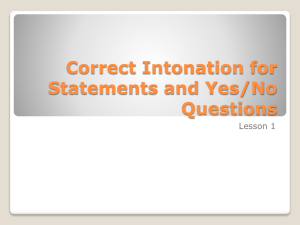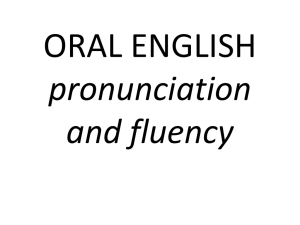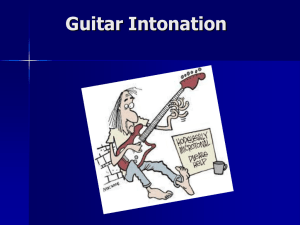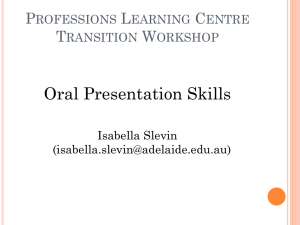Intonation
advertisement
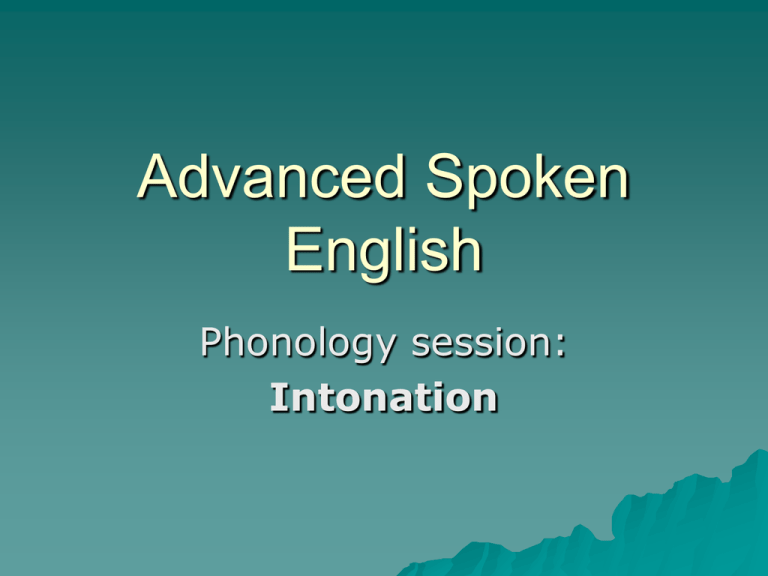
Advanced Spoken English Phonology session: Intonation Learning Outcomes At the end of today’ session, you will: Understand the concept of intonation, both for meaning and function Have practiced changing your pitch in different ways Know how to practice intonation in your own time Do tasks from and Connected Speech Start work on next Speaking Task What happens inside speech units/pause groups? A speech unit is pronounced as if it were ONE BIG WORD. How do we achieve this? Intonation over the unit Linking Elision of consonants Intonation over the unit Each pause group has its own intonation pattern. Don’t continue the same intonation pattern! Intonation What? – Changes in the pitch of your voice. Like singing. Big problem for many people. Two types of intonation – Intonation for meaning – Intonation for (grammatical) function Intonation for meaning Very personal. Expresses your emotion. TASK: Try saying the following phrases with different emotions: – – – – – “Morning” “yes” “No” “I like it” “That was heaps of fun” Intonation works with body language Intonation for Function Grammatical function: spoken punctuation Declarative sentence Y/N question open question Introducing a sentence Changing the topic Declarative sentences Lower your pitch at the end Say the following sentences out loud – She saw that man. – She saw that great big man. – She saw that great big man’s weapon. (Remember in the news item, the policeman’s voice stayed up if he had an ‘and’ coming, but went down before a long pause.) Y/N questions Raise your pitch at the end Listen to the following example Open Questions Lower your pitch at the end Listen to the following example Introducing a sentence with an adverbial phrase Keep your pitch high Listen to the following sentences – Oz Connected Speech, level 3, Tim, first sentence – Streaming Speech, Chapter 1, first sentence Starting a new topic Generally start with a high pitch Summary of the theory behind Intonation Can be found in the Connected Speech tutorials. – Read in your own time, – Listen closely to some of the examples, – mimic. Practice (From Wong 1987) He: Ready? She: No. He: Why? She: Problems. He: Problems? She: Yes. He: What? She: Babysitter. How to practice intonation Both types working all the time Mimic Hum along Shadow-read Develop audio after-image Small sections at a time Listen to yourself Now it’s your time – Work through the examples mentioned in the ppt. (Connected Speech) – Start work on your next speaking Task: Copy Ross’ monologue from the “Friends” clip Focus: Intonation. (Try to make your intonation as exaggerated as his!)

